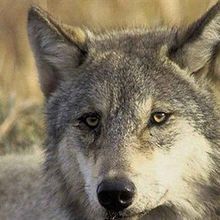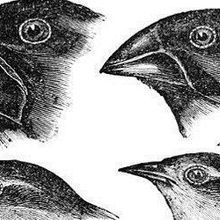hybridization

Using Target Enrichment for More Powerful Next-Generation Sequencing
Arbor Biosciences | Dec 13, 2022 | 1 min read
Discover the benefits of targeted sequencing!

How a Grasshopper Gave Up Sex, Took Up Cloning
Dan Robitzski | Nov 1, 2022 | 5 min read
Meet the grasshopper that has reproduced asexually for a quarter of a million years—without acquiring undue numbers of harmful mutations.

Could Dad’s Mitochondrial DNA Benefit Hybrids?
Alejandra Manjarrez, PhD | Jan 20, 2022 | 7 min read
Studies have found that organisms can inherit mitochondria from male parents in rare instances, and both theoretical and experimental work hint that this biparental inheritance is more than just a fluke.

The Extinct Species Within
Christie Wilcox, PhD | Aug 6, 2021 | 10+ min read
The genomes of living animals are littered with DNA from long-gone relatives, providing a lens on evolution, past extinctions, and perhaps even solutions to agricultural problems.

Infographic: Animals of Different Species Hybridize
Ashley Yeager | May 1, 2021 | 2 min read
The offspring of crosses between related species can sometimes fill a new environmental niche, and such hybridizations may even lead to speciation.

Hybrid Animals Are Not Nature’s Misfits
Ashley Yeager | May 1, 2021 | 8 min read
In the 20th century, animals such as mules and ligers that had parents of different species were considered biological flukes, but genetic sequencing is beginning to unravel the critical role of hybridization in evolution.

Direct Capture of Guide RNAs Enables Scalable and Combinatorial Single-Cell CRISPR Screens
The Scientist | Jun 25, 2020 | 1 min read
10x Genomics invites you to join them for an educational webinar.

The Narluga: New Insights from Old Bones
Ashley Yeager | Oct 1, 2019 | 4 min read
DNA analysis of a bizarre, 30-year-old whale skull serves as a reminder of the secrets that museum specimens keep about the natural world.

Killifish Survive Polluted Waters Thanks to Genes from Another Fish
Emma Yasinski | May 6, 2019 | 4 min read
Gulf killifish have made a stunning comeback in Houston with the help of genetic mutations imported from interspecies mating with Atlantic killifish.

Wolf-like Animal Baffles Montana Scientists
Jim Daley | May 29, 2018 | 2 min read
Specialists from the state’s Department of Fish, Wildlife and Parks are working to determine what creature a rancher shot and killed.

Monkey Hybrids Challenge Assumptions of What a Species Is
Jim Daley | May 3, 2018 | 4 min read
A study finds two species of guenon monkeys in Tanzania have been mating and producing fertile offspring for generations.

Wolf Species Are Part Coyote
Alison F. Takemura | Jul 28, 2016 | 2 min read
Genomic analysis reveals wolves and coyotes have hybridized, potentially complicating wolves' protection under the US Endangered Species Act.

Revered Biologist Dies
Catherine Offord | Apr 26, 2016 | 2 min read
Rick Harrison, an evolutionary biologist known for his research on speciation, has passed away at age 70.

Neanderthal-Human Hybrid Unearthed
Bob Grant | Jun 22, 2015 | 3 min read
DNA from the 40,000-year-old bones of a modern human found in Europe contains Neanderthal genes.

Finch Findings
Jenny Rood | Feb 12, 2015 | 2 min read
Full genomes of Darwin’s Galápagos finches reveal a critical gene for beak shape and three overlooked species.

Sexless Hook-Up
Jyoti Madhusoodanan | Sep 1, 2014 | 2 min read
Genome fusion at stem graft junctions can generate new plant species.

Monkey See, Monkey Don’t
Bob Grant | Jun 30, 2014 | 1 min read
Species in a tightly knit genus of Old World primates have evolved tell-tale facial characteristics to prevent hybridization, a study shows.

GM Salmon and Wild Fish Can Reproduce
Bob Grant | May 30, 2013 | 2 min read
Genetically modified Atlantic salmon, which could soon become the first transgenic animal sold as food in the U.S., can breed with wild brown trout to produce a GM hybrid.

The Polar Bear’s Prehistoric Past
Ed Yong | Jul 23, 2012 | 4 min read
Genomic analyses reveal that the polar bear evolved between 4 and 5 million years ago, far earlier than previous studies had estimated.
